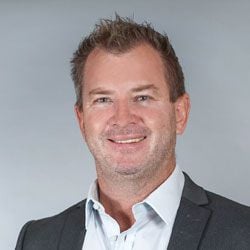
Related

Why data protection is the real backbone of SA's data centre boom
Mohammed Sayed 24 Nov 2025


Data centres near cooling crisis as AI demand surges
Dean Wolson 14 Oct 2025



Top stories






More news











Cushman & Wakefield | BROLL's managing director of transaction services, Calvin Crick, confirms that South Africa continues to attract data centres to its property market. The real estate services company has successfully recently advised many operators on transactions in SA.

This supports the findings published in a Global Data Centre Market Comparison by Cushman & Wakefield, which reports that hyperscale tenants continue their relentless expansion across regions, with a specific interest in secondary and emerging markets, and in 2022 made major announcements including Africa. The study analyses over 1,600 data centres across 63 global markets, including Johannesburg, Lagos and Nairobi.
Cape Town ranks among the report’s top 10 global markets to watch for future data centre locations, alongside smaller coastal cities like Auckland and Patagonia.
While Cape Town's competitiveness grows, Crick notes that Johannesburg remains South Africa's leader in data centre demand.
The report confirms this: for the first time in its four editions, Johannesburg is listed among markets for cloud availability - a high-weight criterion for data centres, alongside market size and fibre connectivity.
Joburg is one of 34 global markets with some form of presence of all three of world’s largest hyperscale services – Amazon Web Services, Microsoft Azure and Google Cloud. It is the only African city in the report that can make this claim.
Crick anticipates that the transformative 2Africa subsea cable will be a game-changer for South Africa's fibre connectivity in 2023. Spanning 45,000 kilometres, it will interconnect Europe, Asia, and Africa and provide up to 180Tbps of capacity - more than the total combined capacity of all subsea cables serving Africa today. China Mobile, MTN, Meta Platforms, Orange, Center3, Telecom Egypt, Vodafone, and the West Indian Ocean Cable Company are driving the project.
“The 2Africa subsea cable will ramp up connectivity with three landings in South Africa, significantly increasing the country's appeal as a data centre location,” says Crick.
Moreover, Johannesburg ranks third globally for best land price. Although land cost is only a small fraction of total data centre construction expenses, affordable land reduces barriers to entry.
“Land suitable for data centres in Johannesburg and Cape Town is considered affordable when compared to land in established European and US market,” says Crick.
Other low-weight criteria are power price and environmental risk. Floods, earthquakes, tornadoes and hurricanes are all considered environmental risks. The need to locate data centres in areas that are safe from natural and other disasters is crucial to maintain uptime, particularly if other sectors of the economy are disrupted.
Nairobi and Lagos both rank in the top 10 for markets that offer low environmental risk.
Crick notes that the stringent environmental criteria for data centre locations – away from flood plains, wetlands, flight paths, residential areas, and more – limits the availability of sites in Johannesburg but rewards early entrants with prime spots.
He also highlights that power issues in South Africa do not deter hyperscalers due to alternative energy sources being available and given that data centre development has a multi-year development programme.
Nairobi is the only African city mentioned for mid-weight criteria (incentives, taxes, political stability, vacancy, development pipeline, sustainability, and smart cities) thanks to its focus on sustainability.
Given hyperscale tenants' commitment to reducing carbon footprints, construction of renewable energy - such as wind, solar, or hydropower - is increasingly important for data centre locations.
“As a high-tech and multi-layered asset class, data centres have numerous opportunities to lessen their carbon footprint. Like businesses across all sectors, hyperscalers are rapidly realising that their real estate strategies are pivotal in meeting their environmental commitments, and working with like-minded property services companies that appreciate the critical role of climate impact to ensure that they achieve both,” emphasises Crick.
Carbon-reducing initiatives include renewable construction materials, immersion cooling, AI-assisted workload management, and more inventive methods like using waste heat for warming nearby homes.